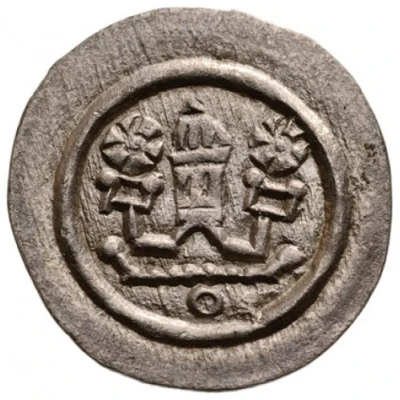


© Numismatics.hu
Obol - Andrew II ND
| Bronze | 0.22 g | 11.60 mm |
| Issuer | Hungary |
|---|---|
| King | Andrew II (II. András) (1205-1235) |
| Type | Standard circulation coin |
| Years | 1205-1235 |
| Value | Obol (Obulus) (½) |
| Currency | Denier (997-1310) |
| Composition | Bronze |
| Weight | 0.22 g |
| Diameter | 11.60 mm |
| Shape | Round (irregular) |
| Technique | Hammered |
| Demonetized | Yes |
| Updated | 2024-10-05 |
| Numista | N#51061 |
|---|---|
| Rarity index | 97% |
Reverse
Threetowered fort standing a flowerdecoration in inner circle
Edge
Plain
Interesting fact
The Obol coin from Hungary, issued during the reign of Andrew II (1205-1235), is interesting because it was one of the first coins to feature a unique design that was specific to Hungary, rather than using a standard design that was used across many different countries. This design featured a cross on one side and the king's name on the other, and it was made of bronze, which was a common material for coins at the time. Despite its small weight of 0.22g, the Obol was an important coin in its time and played a significant role in the economy of medieval Hungary.

